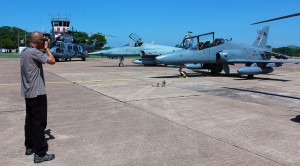www.malaysiandefence.com is the first Malaysian-based English website dedicated to the Malaysian defence and security news. Malaysian Defence is helmed by Marhalim Abas, who was a former journalist and editor with the New Straits Times, the Malay Mail and the SUN daily.

We are pleased to accept advertisements to help us maintained the site. If you are interested please sent a proposal to marhalim68@gmail.com.
Discover the epitome of precision and elegance with our exquisite replica watches. Crafted with meticulous attention to detail, each timepiece embodies the essence of Swiss watchmaking heritage. Experience luxury without compromise with our stunning swisswatch replicas.
For related articles about Replica Watches, please read:
— Malaysian Defence
If you like this post, buy me an espresso. Paypal Payment


So that is exactly what a commenter has said before here (in july), that gading marine won that tender, way before the official announcement… how did that be? maybe they are so confident that they will win, or they are the only qualified tenderer.
https://www.malaysiandefence.com/six-fics-for-ops-benteng/#comment-431036
The gading marine fic is a joint unikl-mimet and gading marine project… So maybe unikl mimet is also involve in this project for TLDM
@ Zamrij59
Would be interested to know what actually Unikl-mimet brought to the table on this project. Hopefully something substantial and would develop more local naval design architect and engineers and also a start for having our own local designs for something like the FIC without needing to buy designs from overseas.
What i know is that the FIC is based on the Polis marin FIC, which was designed by a foreign design office (which has designed most of the FIC built by various shipyards in malaysia before).
_____________________
anyway off topic
Romania has been approved for US DSCA FMS sale of 2 batteries of NSM coastal system for USD300 million. Very expensive compared to buying direct from Norway.
Poland bought 2 NSM coastal battery for just USD120 million direct from Norway. It later ordered a second batch to have a full regiment of 4 batteries of NSM Coastal.
US FMS battery has only 2 launcher per battery (8 ready missiles) compared to buying direct from Norway like Poland with 3 launcher per battery (12 ready missiles)
Poland NSM coastal battery is also inclusive of targeting radars (which the romanian offer lacks and replaced by link 16 equipped forward observers only). Each Poland NSM battery consists of:
– 3x MLV (Missile Launch Vehicles)
– 1x BCV (Battery Command Vehicle)
– 3x CCV (Combat Command Vehicles)
– 1x MCC (Mobile Communication Center)
– 1x MRV (Mobile Radar Vehicle) with TRS-15C radar
If we are going for NSM coastal (which IMO we should, to create the 3rd missile regiment of our rocket artillery brigade), we better go direct with Norway, and get similar batteries like Poland.
@ Zamrij59
” The gading marine fic is a joint unikl-mimet and gading marine project ”
Hmmm…
So I would like to know who designed and put this on top of the roof of a very fast boat and thinks that it is a good idea?
https://www.malaysiandefence.com/wp-content/uploads/2019/05/PM.jpg
That is the only point that really makes me go facepalm on otherwise a very nicely designed boat (which is by LOMOcean New Zealand BTW)
I never knew our army have its own watercraft fleet. Can I know what else watercraft owned by our army other than this 12 new RHIB?
BTW congrats for the new asset
Reply
Most are small boats for assault work
The FIC model design can be seen on FB Naza Model Art @ Nazaruddin Hashim.. maybe same hull as Police Marine,, but different Superstructure..
Reply
Yes, based on the post it is likely there will be a function very soon…
Already seen the FIC model on Naza page..so the design will be same as Gading Marine FAC PC 31 of Malaysia Police.
Yes. I have seen the basic layout model builr by Naza model art too. Its very basic model as not enough tume given to put details . Small craft.
A,
Various types of aluminium, fibre glass and other boats have been used for decades. During the Confrontation sone wee used along the rivers of Sabah. During the 2nd Emergency they were also used along rivers and various dams the army (mostly TA units) had a presence at. “Coxswains” we’re armed with Sterlings.
as a unikl mimet student i would say that almost every year there will at least one boat been carried to our shipyard back there either for refit or repair .. at least we know that unikl mimet got some capabilities to do it .. one of my friend got contract here and is working on some police boat now .. don’t know he work for which company